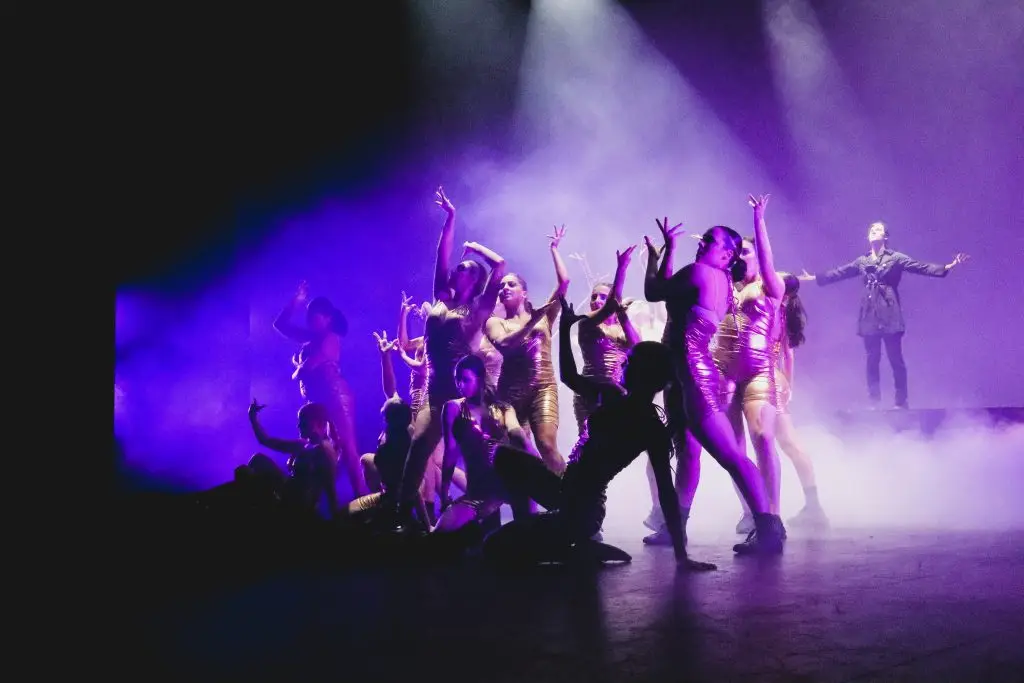Stage lighting plays a pivotal role in any performance, but for dance schools, it can be the difference between a good show and a mesmerizing experience. Proper lighting not only enhances the visual appeal of the performance but also helps in storytelling and setting the mood. In this blog post, we’ll explore how stage lighting can elevate dance school performances and what considerations should be made when planning your lighting setup.
The Importance of Stage Lighting in Dance
- Enhances Visual Impact: Lighting highlights the dancers’ movements and creates a dynamic visual experience. It draws the audience’s attention to key elements and ensures that every movement is seen clearly.
- Sets the Mood: Different lighting colors and intensities can evoke various emotions and set the tone for the performance. Whether it’s a romantic ballet or an energetic hip-hop routine, the right lighting enhances the emotional impact.
- Focus and Emphasis: Lighting can be used to focus on individual dancers or groups, emphasizing solos and key moments in the choreography. Spotlights and follow spots are particularly effective in highlighting standout performances.
- Creates Atmosphere: The use of ambient lighting can create a sense of place and atmosphere, transporting the audience to different settings and enhancing the narrative of the dance.
Key Elements of Stage Lighting for Dance
1. Types of Lights
- Spotlights: Essential for highlighting solo performances and specific parts of the stage. They provide a focused beam of light that can be directed precisely.
- Floodlights: Used to wash large areas of the stage with light, ensuring that the entire stage is illuminated.
- LED Lights: Versatile and energy-efficient, LEDs can change colors and create various effects, making them ideal for dynamic lighting designs.
- Gobos: These are templates placed in front of a light source to project shapes, patterns, or logos onto the stage, adding a unique visual element to the performance.
2. Color and Intensity
- Color: Different colors can convey different emotions and themes. Warm colors like reds and oranges can create a sense of warmth and passion, while cool colors like blues and greens can evoke calmness or mystery.
- Intensity: Adjusting the brightness of the lights can help create contrast and depth. Brighter lights can highlight energetic moments, while dimmer lights can add a sense of intimacy or tension.
3. Lighting Design
- Layering: Using multiple layers of light from different angles can create a more immersive and three-dimensional effect. This helps in highlighting the dancers from various perspectives.
- Movement: Moving lights can add dynamism to the performance. Automated lights can follow dancers across the stage or create sweeping effects that enhance the choreography.
- Timing: Synchronizing lighting changes with the music and movements can create a cohesive and impactful performance. Well-timed lighting cues can enhance dramatic moments and transitions.
Practical Considerations for Dance Schools
1. Budget and Equipment
Investing in high-quality lighting equipment can be expensive, but it’s crucial for professional-looking performances. Dance schools should consider their budget and explore rental options if purchasing is not feasible.
2. Technical Expertise
Having a skilled lighting technician is invaluable. They can design and execute a lighting plan that complements the choreography and ensures smooth transitions between scenes.
3. Rehearsals
It’s important to incorporate lighting into rehearsals. This allows dancers to get used to performing under stage lights and helps identify any adjustments needed in the lighting design.
4. Safety
Safety should always be a priority. Ensure that all lighting equipment is securely mounted and that cables are safely managed to prevent accidents.
Conclusion
Stage lighting is a powerful tool that can transform dance school performances from ordinary to extraordinary. By carefully planning and executing a lighting design that complements the choreography, dance schools can create visually stunning and emotionally engaging performances. Whether you’re a small studio or a large academy, investing in the right lighting can elevate your dancers’ performances and leave a lasting impression on your audience.

